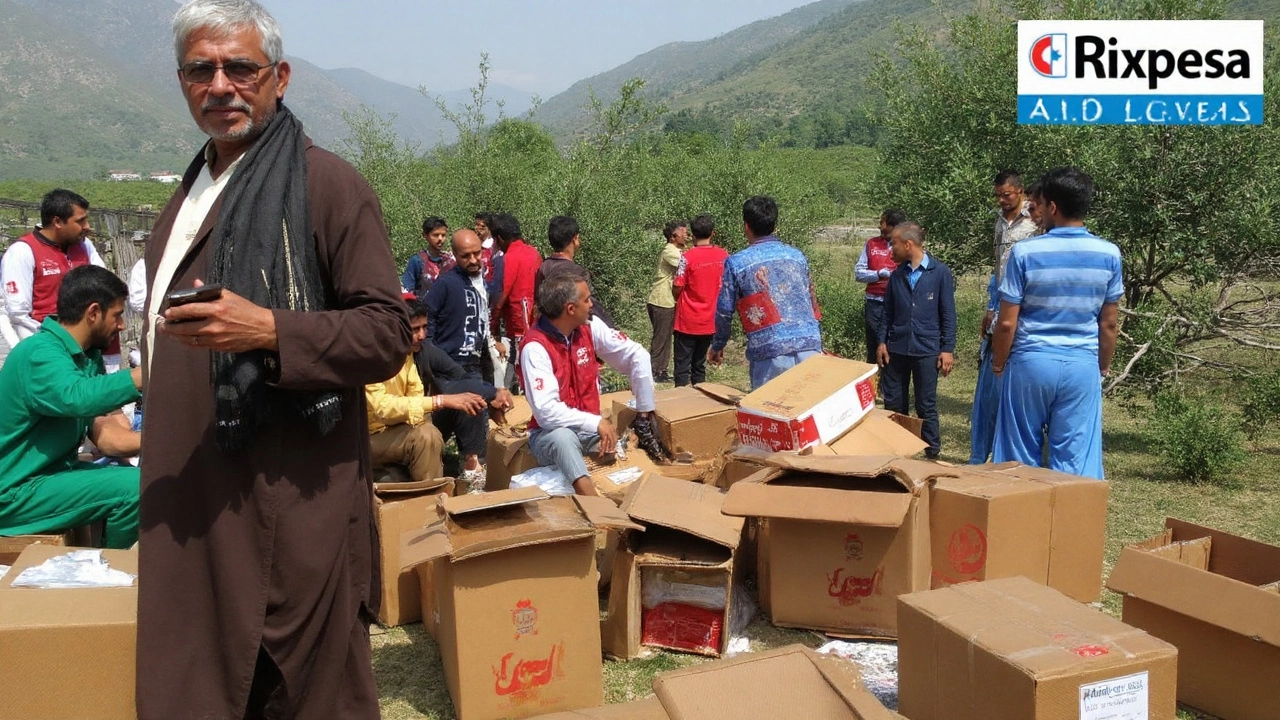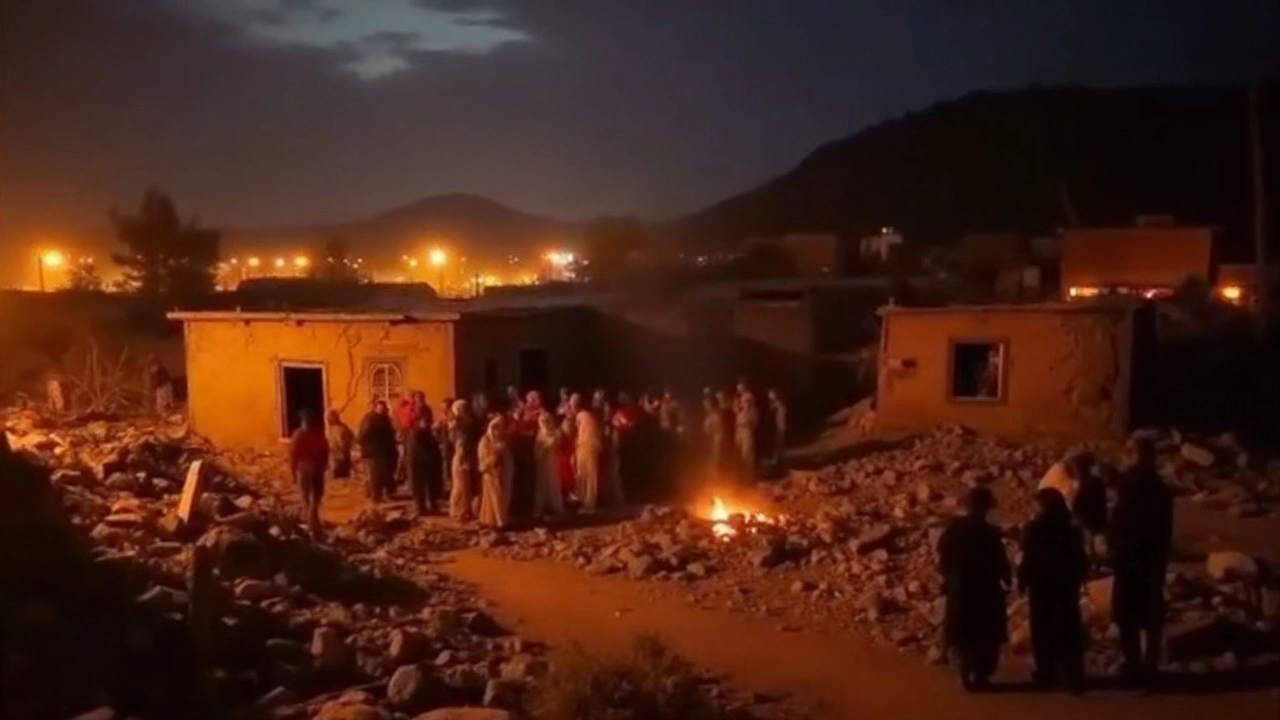A midnight quake that buried villages
Entire families were crushed in their sleep when a 6.0 magnitude earthquake hit eastern Afghanistan just after midnight, flattening homes across mountain valleys near the Pakistan border. More than 1,100 people are confirmed dead and at least 3,250 are injured, according to the Afghan Red Crescent, with the toll expected to rise as rescuers push into cut-off settlements around Jalalabad. Health officials say the list of missing is long and many villages are still unreachable.
It was the worst kind of timing. A strong quake at night, shallow enough to shake mud-brick houses into dust, and in a region where roads cling to cliffs and rivers cut off entire communities. Emergency teams describe long stretches where vehicles can only crawl. In some places, the only way in is on foot or by helicopter.
The first counts from hospitals came in fast, then kept climbing through the morning. The World Health Organization initially reported more than 800 deaths and over 2,000 injuries. As responders reached new valleys, those numbers surged. In one village alone, the health ministry said 30 people were found dead under collapsed roofs.
From Jalalabad’s clinics to small district hospitals, nurses and doctors set up triage outside under canvas. Stretchers lined the courtyards. Power cuts forced staff to work by torchlight in some places, moving the badly hurt to operating rooms as generators kicked in. Ambulances ran nonstop, and when they were not enough, pickup trucks and tractors ferried the wounded.
Helicopters crisscrossed the broken terrain at first light, lifting survivors and bodies from hamlets perched on steep slopes. Footage from the region showed residents and Taliban soldiers forming human chains to carry people from choppers to ambulances. With roads damaged or blocked by rockfall, airlifts became lifelines.
Rescue teams say their first 48 hours are crucial. This is the window where people trapped under rubble are most likely to be found alive. But the terrain is working against them. Thick-walled homes made of sun-dried bricks and timber beams collapse into heavy slabs, leaving little air space. Without heavy equipment, it comes down to shovels, crowbars, and hands.
The Afghan Red Crescent has sent medical teams, first aid kits, and body bags into the worst-hit districts. Local volunteers are digging side by side with responders. Aid workers are distributing blankets, tents, and plastic sheeting to families sleeping in open fields, fearful of aftershocks. At night, temperatures drop fast in the hills, and survivors are arriving at clinics dehydrated and in shock.
The quake struck in the Hindu Kush region, where the Indian and Eurasian tectonic plates grind together. Afghanistan sits on this fault line, and it pays a hard price. Strong quakes are not rare here, but the damage often turns deadly because many buildings are unreinforced, roads are fragile, and rescue capacity is thin. When the ground shakes, adobe houses crumble, and whole neighborhoods can go down in seconds.
People across eastern Afghanistan felt the main jolt, then lighter shaking. Aftershocks are expected and can bring down walls left leaning by the first wave. Many families are staying out in courtyards and fields, sleeping under tarps or in cars. Schools and mosques are opening their grounds to the displaced.
This disaster hits a country already stretched to breaking point. Afghanistan is one of the poorest nations on earth, with a battered economy, limited cash in the banking system, and a health sector that has survived on emergency aid for years. The United Nations has called it a perfect storm: a major quake on top of a humanitarian crisis, in a place where getting help to people is never simple.

Race against time: rescue, logistics, and politics
Search and rescue crews are racing the clock. In these first days they need three things above all: access, fuel, and specialized gear. Access means clearing blocked roads and identifying safe helicopter landing zones near cluster villages. Fuel keeps ambulances and generators running. Gear includes lifting tools, cutting equipment, medical supplies, and portable shelters.
Logistics in eastern Afghanistan come down to a few arteries. The Kabul–Jalalabad highway is notorious for steep passes and landslides even in normal times. Mountain tracks to highland villages are narrow, unpaved, and prone to rockfall after strong shaking. Where roads are unpassable, choppers and foot patrols are the only options, which slows everything from casualty evacuation to delivery of tents and food.
Cross-border support could ease the bottleneck. Jalalabad sits not far from the Torkham crossing with Pakistan, a route aid agencies often use to move supplies. Coordinated customs clearance and fast-tracked permissions can shave days off delivery times. Every lost day means more people sleeping outside without clean water or proper shelter.
Hospitals in Jalalabad, Laghman, Kunar, and Nuristan are under heavy strain. Surgeons are dealing with crush injuries, fractures, and head trauma. Orthopedic supplies, antibiotics, IV fluids, and anesthesia are in short supply. Mobile clinics are being stood up to handle minor injuries and free up operating rooms for the critical cases. Psychosocial teams, where available, are counseling families who have lost loved ones and homes.
Public health risks rise quickly after a quake. When water lines break and latrines are destroyed, diarrheal disease spreads. Children and the elderly are the first to get sick. Health workers are pushing for chlorination tablets, safe water tanks, and emergency latrines in displacement sites. Vaccination teams are also a priority in a country where routine immunization has been disrupted in recent years.
Food is another urgent need. Granaries and storage rooms often sit inside the same mud-brick homes that collapsed. Families who fled with nothing are relying on neighbors and local mosques. Aid agencies will aim to deliver ready-to-eat food in the first days, then shift to staples like flour, oil, lentils, and salt once kitchens and stoves can be set up safely.
Shelter will drive the next phase. Quick fixes like tarps and tents help for a week or two, but rebuilding is the hard part. In many eastern districts, people construct homes with local clay and timber. These are affordable and familiar, but they fail under lateral shaking. Simple upgrades can save lives: wooden ring beams to tie walls, better mortar, lighter roofs, and small steel reinforcements at corners and openings. The challenge is cost. Families cannot afford upgrades without grants or subsidized materials.
Afghanistan has seen this before. In October 2023, a 6.3 quake and strong aftershocks struck Herat in the west. The Taliban authorities said at least 4,000 people died. The UN estimated roughly 1,500. Either way, it was one of the deadliest disasters in decades. In 1998, earthquakes in the northeast killed thousands. In 2002, a quake destroyed parts of Nahrin. The pattern repeats: night-time shocks, soft soil, weak buildings, many victims.
Money will decide how quickly people recover. Emergency relief requires cash for fuel, spare parts, medical supplies, and wages. But Afghanistan’s financial system is constrained, and moving funds in and out of the country can be slow. Aid groups often rely on humanitarian carve-outs in sanctions regimes and use trusted channels to pay local vendors. That process takes time and coordination.
There is also the question of who can work where. Rules for aid operations vary by sector and province, and restrictions on women working have complicated the delivery of services in some areas. Health and education programs have sometimes received exemptions, but agencies say they still need clear access and predictable permissions to reach all survivors, especially women and children.
Satellite mapping will help guide the response. After big quakes, international teams often use radar and optical imagery to scan for landslides, surface cracks, and damaged settlements. That data helps planners decide where to send helicopters, where to drop supplies, and which valleys are most in need. Drones, if cleared to fly, can check roads and identify safe routes for convoys.
What do survivors need right now? The essentials are straightforward:
- Safe shelter: tents, tarps, blankets, and warm clothing for cool nights.
- Clean water and sanitation: water tanks, purification tablets, and emergency latrines.
- Medical care: trauma surgery, antibiotics, pain relief, and rehabilitation for fractures.
- Food: ready-to-eat rations in the first days, then staples as cooking becomes possible.
- Protection and support: child-friendly spaces, psychosocial care, and safe areas for women and girls.
Schools, clinics, and mosques will likely double as shelters. That keeps families together but also strains services. Teachers, imams, and health workers become frontline responders, organizing distribution lines and keeping order at crowded sites. Clear information matters: where to register, where to get water, what to do when aftershocks hit.
Rebuilding will take months at least, and for some places, years. The safest plan is to rebuild stronger rather than reconstructing the same hazards. That means designs that local masons can deliver with materials they can source: tie-beams at wall tops, bracing around doors and windows, lighter roof systems, and better foundations. Even small design changes can turn a deadly collapse into cracked walls and repairable damage.
Geologists say the Hindu Kush generates deep and intermediate-depth earthquakes as the Indian plate plunges under Eurasia. A magnitude 6.0 is serious, but what makes it lethal here is not just the magnitude; it is the shallow shaking right beneath fragile homes and the isolation of the communities affected. When the quake hits at night, there is no time to run.
For now, the focus is still on rescue. In towns around Jalalabad, people are lining up to donate blood. Shopkeepers are offering tea and bread to families waiting for word of missing relatives. Bulldozers are clearing main roads while villagers cut paths to side valleys. The first convoys of tents and medical kits ease the shock, but the grief is raw and the needs remain large.
As the scale becomes clearer, aid agencies are likely to issue a rapid appeal to fund search and rescue, health services, shelter, and water and sanitation. Donors will weigh immediate grants against longer-term recovery support. Even small, fast grants can keep clinics open and fuel trucks moving in these first critical days.
None of this reduces the human cost in the places hit hardest. Rows of fresh graves and piles of broken brick tell the story. Families are mourning while also planning where to sleep tonight and how to feed their children tomorrow. For them, the measure of success is simple: a safe tent, clean water, a working clinic, and a rebuilt home that will not fall when the ground shakes again.
In the weeks ahead, the question is whether this crisis can also push forward safer building and steadier support for a region that lies on a fault line and lives with constant risk. The science is not new. The need is not new. What changes lives here is whether help arrives fast, reaches the most isolated villages, and leaves behind stronger homes than before.
Everything now rides on coordination and speed. The first phase is about saving lives. The next is about restoring dignity and making sure the next shock does not turn into the next mass casualty event. That is the test this time after the Afghanistan earthquake that struck at midnight and shattered so many homes.





